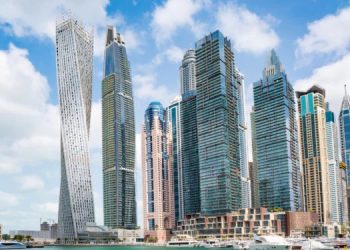JERUSALEM (news agencies) — Thousands of mostly ultranationalist Israelis were expected to take part in an annual march through a dense Palestinian neighborhood in Jerusalem’s Old City on Wednesday in an event that often sees racist chants and brawls.
Jerusalem, the epicenter of the Israeli-Palestinian conflict, has been mostly calm throughout the Israel-Hamas war, but the march could ignite widespread tensions, as it did three years ago, when it helped set off an 11-day war in Gaza.
The current war began with Hamas’ Oct. 7 attack into southern Israel, in which militants killed some 1,200 people, mostly civilians, and abducted around 250 hostages. Israel responded with a massive offensive that has killed over 36,000 Palestinians, according to local health officials, displaced most of the territory’s population and caused widespread destruction.
The United States has thrown its weight behind a phased cease-fire and hostage release outlined by President Joe Biden last week. But Israel says it won’t end the war without destroying Hamas, while the militant group is demanding a lasting cease-fire and the full withdrawal of Israeli forces.
The annual march commemorates “Jerusalem Day,” which marks Israel’s capture of east Jerusalem, including the Old City and its holy sites sacred to Jews, Christians and Muslims, in the 1967 Mideast war.
Israel considers all of Jerusalem to be its capital, but its annexation of east Jerusalem is not internationally recognized. The Palestinians, who seek east Jerusalem as the capital of a future state, see the march as a provocation.
In past years, police have forcibly cleared Palestinians from the parade route, and large crowds of mostly ultranationalist youth have chanted “Death to Arabs,” “May your village burn” and other offensive slogans. The police say they are deploying 3,000 security personnel to ensure calm.
At the insistence of Israel’s far-right National Security Minister Itamar Ben-Gvir, the march will follow its traditional route, entering the Muslim Quarter through Damascus Gate and ending at the Western Wall, the holiest place where Jews can pray.
As buses bringing young Jewish men in for the march thronged around the Old City’s centuries-old walls, Palestinian shopkeepers closed down in the Muslim Quarter in preparation.
The police stressed that the march would not enter the sprawling Al-Aqsa mosque compound, the third holiest site in Islam. The hilltop on which it stands is the holiest site for Jews, who refer to it as the Temple Mount because it was the location of the Jewish temples in antiquity.
Perceived encroachments on the site have set off widespread violence on a number of occasions going back decades.
Counterprotests were planned throughout the day. An Israeli group, Tag Meir, sent volunteers through the emptying city streets ahead of the march to distribute flowers to Christian and Muslim residents of the Old City.
Follow news agencies’s war coverage at








